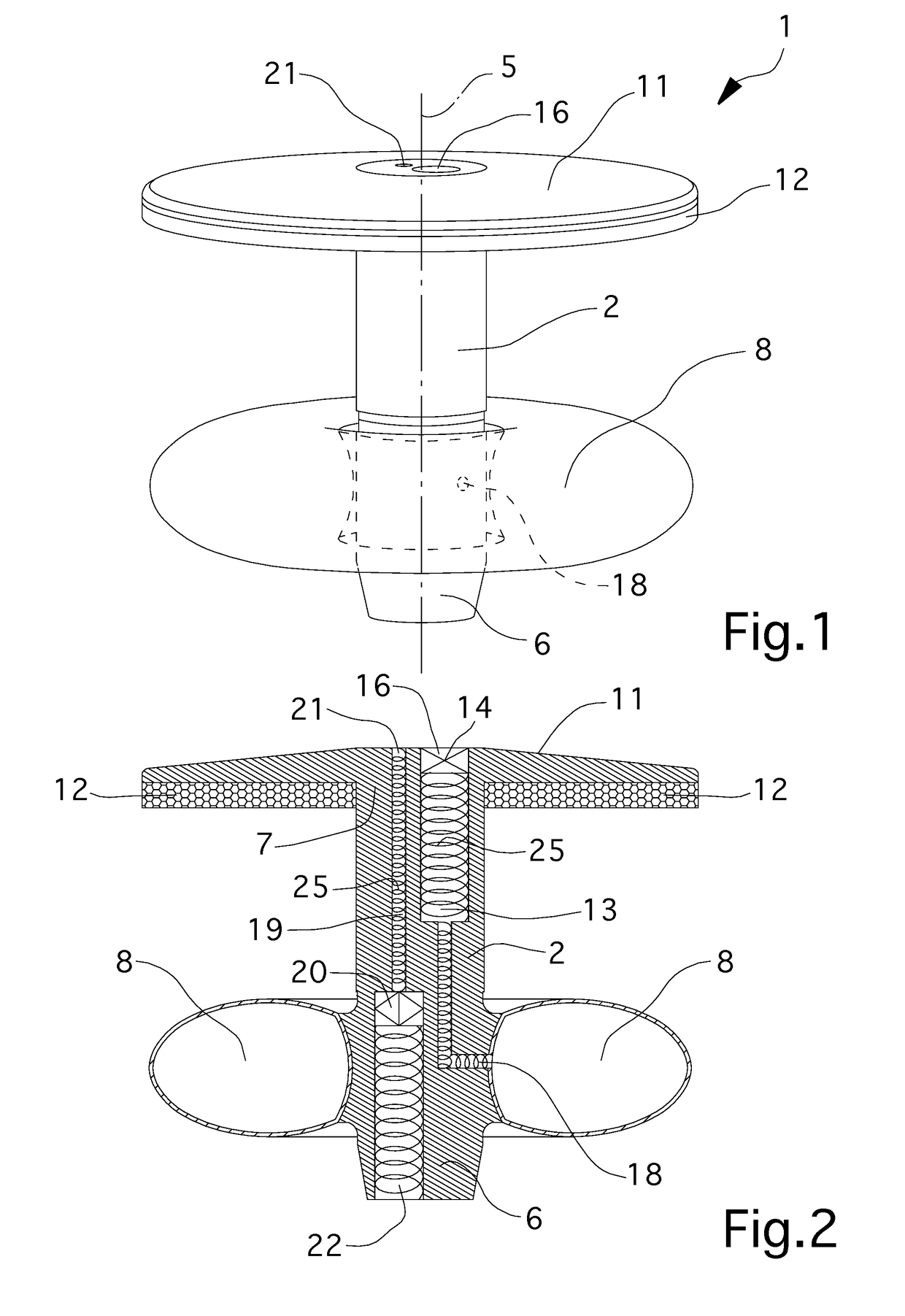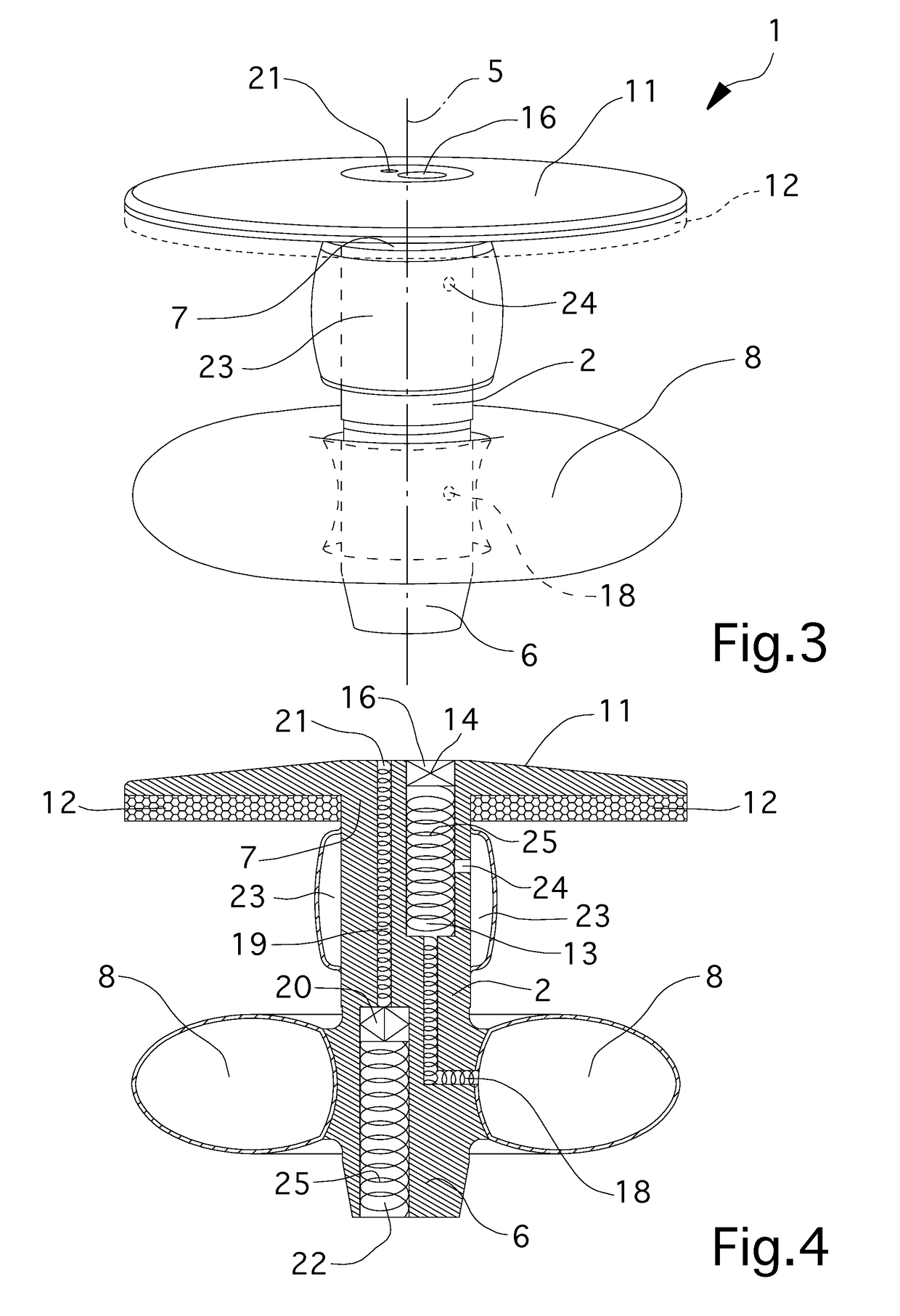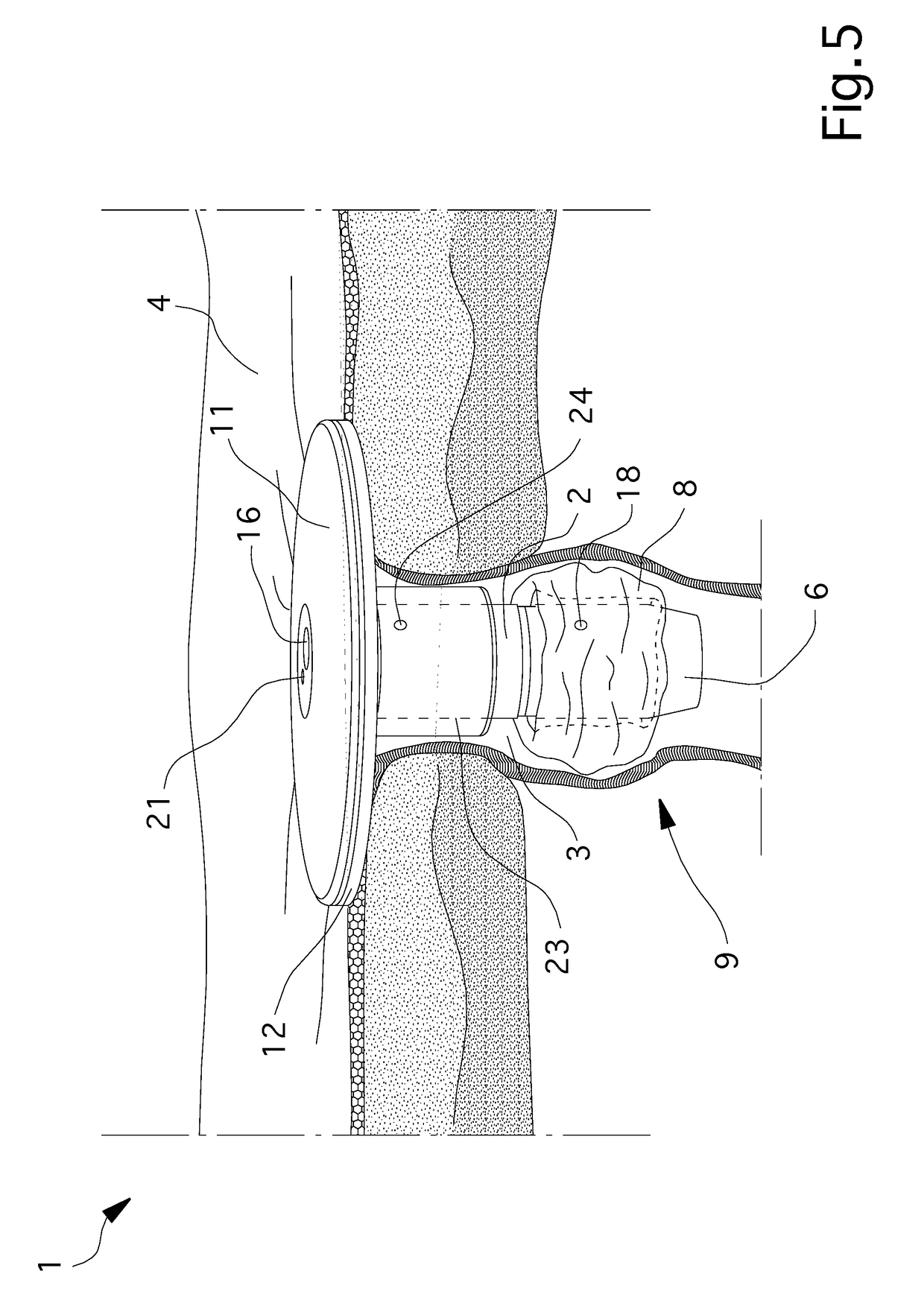Prosthesis For Enterostomy Patients
a technology for enterostomy and prosthesis, which is applied in the field of prosthesis for enterostomy patients, can solve the problems of complex and frequent maintenance, lack of voluntary continence control, and jeopardizing the quality of life of patients
- Summary
- Abstract
- Description
- Claims
- Application Information
AI Technical Summary
Benefits of technology
Problems solved by technology
Method used
Image
Examples
first embodiment
[0043]FIG. 1 is a front view of the prosthesis according to the invention in a first embodiment;
[0044]FIG. 2 is a sectional view of the prosthesis of FIG. 1;
second embodiment
[0045]FIG. 3 is a front view of the prosthesis according to the invention in a second embodiment;
[0046]FIG. 4 is a sectional view of the prosthesis of FIG. 3;
[0047]FIG. 5 is a schematic representation of the prosthesis of FIG. 3 in a first operating mode;
[0048]FIG. 6 is a schematic representation of the prosthesis of FIG. 3 in a second operating mode.
PUM
 Login to View More
Login to View More Abstract
Description
Claims
Application Information
 Login to View More
Login to View More - R&D
- Intellectual Property
- Life Sciences
- Materials
- Tech Scout
- Unparalleled Data Quality
- Higher Quality Content
- 60% Fewer Hallucinations
Browse by: Latest US Patents, China's latest patents, Technical Efficacy Thesaurus, Application Domain, Technology Topic, Popular Technical Reports.
© 2025 PatSnap. All rights reserved.Legal|Privacy policy|Modern Slavery Act Transparency Statement|Sitemap|About US| Contact US: help@patsnap.com



